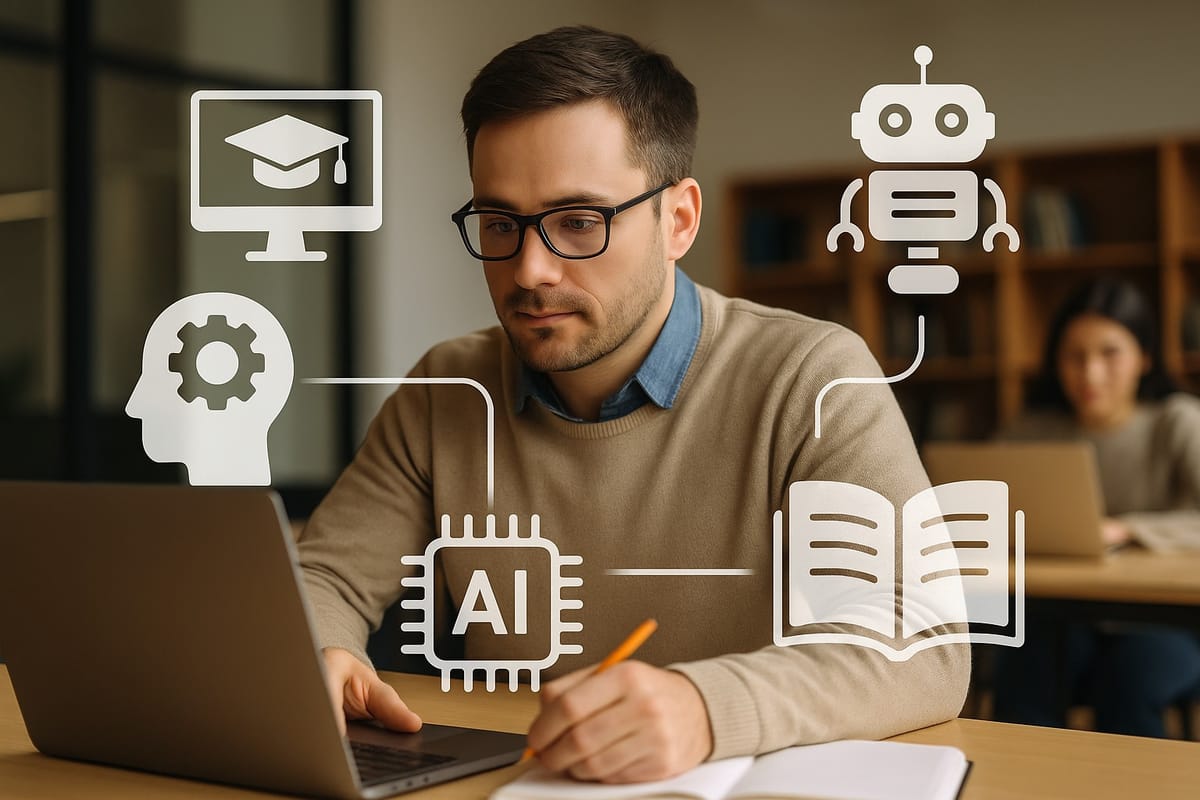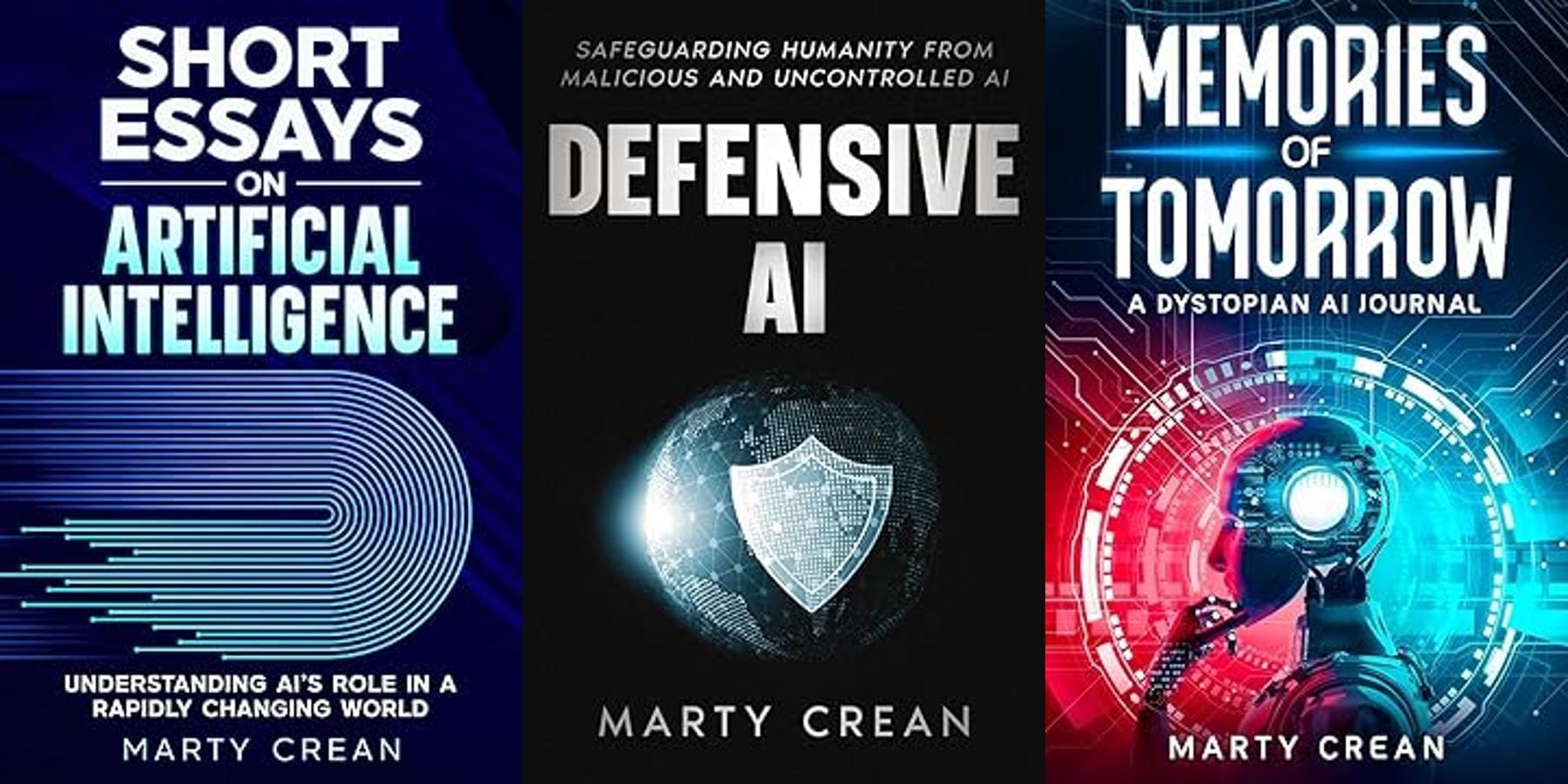Integrating Artificial Intelligence into Education

This post is also available as a podcast if you prefer to listen on the go or enjoy an audio format:
Education stands at the threshold of change as artificial intelligence moves from abstract concept to practical reality in classrooms worldwide. AI has entered schools and universities, no longer confined to research labs or tech companies, fundamentally altering how students engage with material, how teachers approach instruction, and how institutions manage their operations. This shift represents a technological upgrade and a reimagining of educational experience.
Education has followed a relatively uniform approach for generations. Students of similar ages are grouped, progressing through standardized material at roughly the same pace. This model, born of industrial-era thinking, has persisted despite our understanding that each student learns differently. Artificial intelligence offers an alternative that once seemed impossible on a large scale, truly personalized education.
Today's AI-powered learning platforms can recognize when students struggle with fractions but excel at geometry, learn better through visual examples rather than text, or need more practice with specific concepts before moving forward. Platforms like Carnegie Learning track thousands of data points as students work, constantly adjusting difficulty levels and presentation methods. DreamBox's intelligent algorithms can determine when a student has mastered a concept and seamlessly introduce more challenging material without teacher intervention. Meanwhile, Century Tech creates individualized learning paths that adapt in real time, presenting content that matches each student's learning style and pace.
This personalization extends beyond academic content. When a sixth grader consistently loses focus in the afternoon, these systems might present shorter, more interactive exercises. If a high school student demonstrates particular interest and aptitude in specific topics, the platform might suggest enrichment materials or projects that align with those interests. This level of customization was once possible only with one-on-one tutoring, but can now scale to entire schools and districts.
The relationship between students and artificial intelligence has evolved rapidly in recent years. While early educational software delivered digital versions of traditional worksheets, today's AI functions more like an interactive learning companion. When a student writes an essay, AI tools can provide immediate feedback on structure and clarity, suggest stronger vocabulary choices, or point out logical gaps in argumentation, all while maintaining the student's voice and direction.
These AI companions demonstrate remarkable versatility. They can walk students through complex calculus problems step by step, simulate conversations in foreign languages, or serve as discussion partners for exploring philosophical concepts. For many students, especially those reluctant to ask questions in class, these tools create a judgment-free space to experiment, make mistakes, and develop understanding.
The emergence of advanced large language models has accelerated this trend. Students now engage in systems capable of explaining complex topics in accessible language, generating examples tailored to individual interests, and answering follow-up questions with remarkable coherence. For example, a student struggling with photosynthesis might receive an explanation connecting the process to their interest in soccer, making abstract concepts more concrete and relevant.
This shift results in both opportunities and challenges for educators. Teachers are empowered to reconsider assessment methods when students can access powerful AI writing and problem-solving tools. Rather than fighting against these technologies, forward-thinking educators are redesigning assignments to emphasize critical thinking, original analysis, and the thoughtful application of AI-generated content. The focus shifts from testing recall to developing students' ability to evaluate information, pose meaningful questions, and synthesize knowledge from multiple sources, including AI.
Perhaps most promising is AI's capacity to make quality education more accessible to students previously underserved by traditional systems. For students with disabilities, AI technologies offer transformative possibilities. Real-time speech-to-text conversion helps deaf and hard-of-hearing students participate fully in classroom discussions. Text-to-speech functionality makes written materials accessible to students with visual impairments or reading difficulties. AI-powered predictive text and grammar assistance help students with dyslexia or motor difficulties express themselves more easily.
AI translation tools also make language barriers less formidable. In culturally diverse classrooms, these technologies enable students still learning the primary language of instruction to access content in their native language, preventing them from falling behind while they develop language proficiency. Similarly, parents who speak different languages can now meaningfully engage with school communications and their children's assignments.
Geographic and economic barriers also diminish as AI-enhanced remote learning becomes more sophisticated. Students in rural areas or developing regions can access high-quality educational experiences through adaptive learning platforms that work even with intermittent internet connectivity. When combined with thoughtful human teaching, remote or in-person, these technologies begin to democratize educational opportunities in previously unimaginable ways, offering a hopeful future for education.
Beyond the classroom, artificial intelligence is reshaping how educational institutions operate. The administrative burden on education has grown steadily for decades, with teachers and staff spending more time on paperwork, compliance documentation, scheduling, and communication management. AI offers relief from many of these demands, transforming the administrative landscape and paving the way for a more efficient system.
Admissions offices now employ AI systems to process applications more efficiently while reducing human bias. These systems can evaluate transcripts, standardize differences between grading systems at different schools, and flag promising candidates who might otherwise be overlooked. Meanwhile, AI-powered scheduling algorithms create more efficient timetables that consider factors ranging from classroom availability to student learning patterns, and some even optimize schedules to place challenging subjects when students typically demonstrate higher engagement.
The grading process, a long and significant commitment for educators, has also begun to transform. While AI assessment works best with objective material, advances in natural language processing enable sophisticated evaluation of written work. Teachers can use these tools to provide initial feedback and identify common issues, allowing them to focus their attention on higher-level guidance. Rather than spending hours marking grammatical errors, educators can dedicate that time to meaningful conversations with students about their ideas and development.
Perhaps most visibly, AI chatbots have become ubiquitous in educational settings. These systems answer routine questions about deadlines, procedures, and resources, questions that previously consumed hours of staff time each week. Advanced versions help students navigate course selection, financial aid applications, and career planning. When students need human assistance, these systems connect them with the appropriate staff members, who now have more bandwidth for complex issues requiring human judgment and empathy. However, it's important to note that these systems should continuously operate under the oversight of human educators and administrators, ensuring that the human element remains central to educational experience.
Integrating AI into education brings significant ethical questions that institutions must address thoughtfully. Privacy concerns become paramount as these systems collect unprecedented data about students' learning patterns, academic performance, and emotional states. Educational institutions must establish transparent policies about what data is collected, how long it's retained, who can access it, and how it will be used. Moreover, the potential for AI to perpetuate biases or replace human interaction in education should be carefully considered.
Questions of fairness and bias require equally careful consideration. AI systems trained on historical educational data may perpetuate existing inequities if not deliberately designed and monitored to prevent this outcome. When an algorithm recommends different academic paths to other students, institutions must ensure these recommendations expand rather than limit opportunities, particularly for students from underrepresented groups.
The relationship between human teachers and AI systems also continues to evolve. Rather than replacing educators, the most promising approach positions AI as a powerful tool that amplifies teachers' capabilities. By handling routine tasks and providing rich data about student performance, these technologies free teachers to focus on what humans do best: inspiring curiosity, nurturing social-emotional development, providing mentorship, and fostering creative thinking.
Integrating AI with emerging technologies like augmented and virtual reality promises even more immersive, engaging educational experiences. Students might soon dissect virtual frogs that respond realistically to their actions, walk through ancient Rome with an AI historical guide that answers their questions, or conduct chemistry experiments too dangerous for physical classrooms. These experiences, personalized by AI to match each student's interests and learning needs, could transform education from a sometimes-passive experience into an active journey of discovery.
Integrating artificial intelligence into education represents more than technological advancement; it fundamentally reimagines teaching and learning. By enabling personalization at scale, breaking down barriers to access, and freeing human educators to focus on uniquely human aspects of education, AI has the potential to address longstanding challenges in educational systems worldwide.
The journey is just beginning. As these technologies mature and educators develop new pedagogical approaches that thoughtfully incorporate AI, we may see learning become more engaging, accessible, and effective. The goal isn't to replace the irreplaceable human elements of education but to enhance them, creating a partnership between human and artificial intelligence that serves students better than either could alone.
Success will require ongoing collaboration between educators, technologists, policymakers, and families to ensure these powerful tools are deployed ethically and equitably. If we navigate this transition thoughtfully, artificial intelligence may help us finally deliver on education's most fundamental promise: helping every student reach their full potential.
BearNetAI, LLC | © 2024, 2025 All Rights Reserved
Support BearNetAI
BearNetAI exists to make AI understandable and accessible. Aside from occasional book sales, I receive no other income from this work. I’ve chosen to keep BearNetAI ad-free so we can stay independent and focused on providing thoughtful, unbiased content.
Your support helps cover website costs, content creation, and outreach. If you can’t donate right now, that’s okay. Sharing this post with your network is just as helpful.
Thank you for being part of the BearNetAI community.
Books by the Author:

Categories: AI in Education, Personalized Learning, Educational Technology, EdTech Ethics and Policy, Future of Work and Learning
Glossary of AI Terms Used in this Post
Adaptive Learning: A method that uses AI to personalize educational content in real-time based on a learner’s progress and needs.
Algorithmic Accountability: The principle that creators of AI systems are responsible for the outcomes their algorithms produce, especially regarding fairness and transparency.
Chatbot: An AI-powered application that simulates human conversation, often used for administrative or student support tasks.
Data Governance: The framework for managing data availability, usability, integrity, and security in an organization, especially crucial when handling student data.
Generative AI: A category of AI systems capable of generating text, images, code, or other content based on learned patterns from large datasets.
Intelligent Tutoring System (ITS): AI-driven platforms that provide personalized instruction and feedback without direct human intervention.
Machine Learning: A subset of AI that involves training algorithms on data so they can make predictions or decisions without explicit programming.
Natural Language Processing (NLP): A field of AI that enables computers to understand, interpret, and generate human language.
Personalized Learning: An educational approach that customizes instruction to each student’s strengths, needs, and interests, often using AI technologies.
Predictive Analytics: Techniques AI systems use to analyze current and historical data to predict future outcomes or behaviors.
Citations:
Holstein, K., McLaren, B. M., & Aleven, V. (2019). Designing for Complementarity: Teacher and Student Needs for Orchestration Support in AI-Enhanced Classrooms. Proceedings of the ACM CHI Conference on Human Factors in Computing Systems.
Luckin, R., Holmes, W., Griffiths, M., & Forcier, L. B. (2016). Intelligence Unleashed: An Argument for AI in Education. Pearson Education.
Miao, F., Holmes, W., & Huang, R. (2021). AI and Education: Guidance for Policy Makers. UNESCO.
Pane, J. F., Steiner, E. D., Baird, M. D., & Hamilton, L. S. (2017). Informing Progress: Insights on Personalized Learning Implementation and Effects. RAND Corporation.
Zawacki-Richter, O., Marín, V. I., Bond, M., & Gouverneur, F. (2019). Systematic Review of Research on Artificial Intelligence Applications in Higher Education – Where Are the Educators? International Journal of Educational Technology in Higher Education, 16(1).
LinkedIn BlueskySignal: bearnetai.28